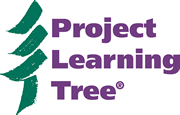Given the convenience with which we can obtain a huge diversity of goods and services and the limited amount of information we have about them, determining which products have a lower impact on the environment is a challenge. By understanding a product’s life cycle, consumers can compare the environmental impacts of various products and choose those that support their values and beliefs, including selecting products that mitigate climate change. The three activities in this section allow students to learn about the environmental impact of products and consider how the decisions and actions of consumers can affect local and global systems. Students explore life cycle assessments and environmental externalities (Activity 9), use product life cycle data to calculate global warming potentials (Activity 10), and develop guidelines for consumer choices (Activity 11), through shopping simulations, a stage play or presentations, debates, class discussions, and reflective writing.
Key Concepts in Section 4
- Negative externalities often impact the environment and society; their costs are either borne by everyone or ignored.
- Negative externalities can occur at any point in a product’s life cycle—not just when the product is made or used.
- Life cycle impacts include more than the ingredients and distance traveled. How the product is used and maintained (dry clean or wash; hang dry or use an electric drier; dispose or repair) and whether the product can be recycled or composted can vary.
- By analyzing life cycles of comparable products, one can determine if there are critical environmental impacts that should be considered prior to purchasing.
- Consumers can influence economic markets by creating a demand for products that have low greenhouse gas emissions throughout their life cycle.
- Product life cycles intersect with climate change in a variety of ways, including greenhouse gas emissions through production and transportation, emissions resulting from the use and disposal of the product, and opportunities to sequester and store carbon.
download the Section 4 Overview.

